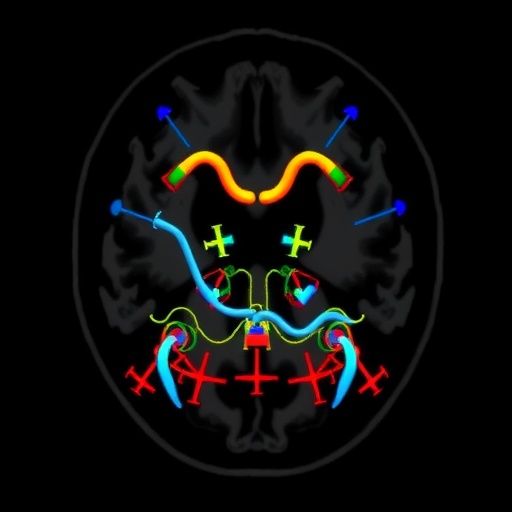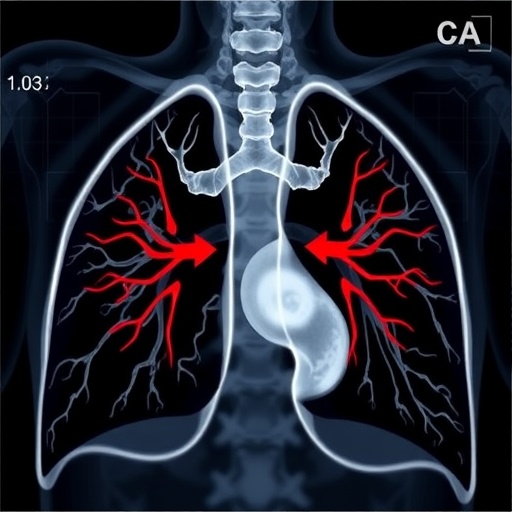In the realm of pediatric radiology, a newly published study sheds light on the pivotal role of magnetic resonance imaging (MRI) in managing cervicofacial lymphatic malformations. These intricate conditions, characterized by abnormal lymphatic vessel growth, present substantial challenges in both diagnosis and treatment. The research undertaken by Schultz, Kalajoki-Helmiö, Kyrklund, and their colleagues serves as a critical contribution to our understanding of how advanced imaging techniques can improve patient outcomes in this complex area of medicine.
Fetal and postnatal MRI are emerging as foundational tools in assessing extensive cervicofacial lymphatic malformations. These malformations typically manifest during early development, but their implications often extend well beyond the womb. The extensive nature of these vascular anomalies often complicates surgical interventions and treatment plans. Thus, the ability to visualize the extent and nature of these malformations through refined imaging techniques is invaluable. This study emphasizes the importance of employing these tools meticulously in clinical settings to better understand patient-specific conditions.
The researchers highlight that the significance of MRI lies not just in visualizing these malformations, but also in their functional implications. MRIs offer multi-dimensional images that facilitate the assessment of both structural and functional attributes of lymphatic systems. These aspects are deeply correlated; the architecture of the lymphatic vessels can significantly affect their function, potentially leading to complications such as lymphedema. Understanding these dynamics can assist clinicians in predicting outcomes and customizing treatment plans pertinent to individual patients.
In the case of cervicofacial lymphatic malformations, imaging with MRI allows for a detailed analysis of soft tissue and vascular structures. This clarity is particularly crucial, as many patients may experience not only aesthetic challenges but also functional impairments related to airway or feeding difficulties. The comprehensive nature of MRI images enables healthcare providers to devise surgical and non-surgical interventions ideally suited for reducing complications and enhancing overall quality of life.
Moreover, this study underscores the relevance of early diagnosis and intervention. By integrating MRI into standard protocols, particularly for at-risk fetuses, clinicians can promptly address complications associated with cervicofacial malformations. The implications of early image-guided interventions include the potential for informing parents about what to expect and preparing for possible interventions at birth, thereby reducing the time to treatment when babies are delivered.
The researchers also explore how advancements in MRI technology have made it more accessible and practical for routine use. Contemporary MRI techniques, such as diffusion-weighted imaging and dynamic contrast-enhanced studies, provide more comprehensive insights into the vascularity and tissue characteristics of lymphatic malformations. These innovations enable practitioners to make informed decisions not only about immediate treatment but also about long-term patient management strategies.
As the data unfolds, the research team emphasizes the prospect of a multi-disciplinary approach to treating patients with extensive cervicofacial lymphatic malformations. Collaboration among radiologists, surgeons, and pediatric specialists is essential to create a cohesive and comprehensive management strategy. By leveraging MRI findings, these professionals can engage in detailed discussions regarding treatment pathways, potential interventions, and the expected outcomes tailored for each patient’s unique presentation.
Importantly, the research also addresses the ethical dimensions of conducting advanced imaging during pregnancy. While the benefits of detailed imaging are substantial, discussions about the risks and implications must remain at the forefront of clinical practice. Medical professionals must engage in transparent dialogue with expecting families to ensure that they are well-informed about the necessity and risks associated with fetal MRI, thus fostering trust and collaboration in the therapeutic process.
The findings of this study have far-reaching implications that may change clinical practice. An increased reliance on fetal and postnatal MRI can usher in an era of enhanced precision medicine, where treatments are individualized based on comprehensive imaging insights. This shift has the potential to revolutionize how healthcare providers manage lymphatic malformations, ultimately improving patient outcomes.
As the study progresses in the field of pediatric radiology, its contributions to the discourse around lymphatic malformations stand to inspire future research endeavors. The application of advanced imaging could be extended beyond the cervicofacial region, potentially influencing the assessment and treatment of other vascular malformations affecting various anatomical regions in pediatric patients.
In conclusion, the multifaceted role of MRI in the assessment of extensive cervicofacial lymphatic malformations marks a significant advance in pediatric care. The seamless integration of imaging into clinical practice not only underscores the necessity of early and accurate diagnosis but also highlights the importance of personalized treatment plans based on detailed imaging insights. As research continues to evolve, the findings from this study will undoubtedly shape the future landscape of pediatric radiology, fostering advancements that prioritize the welfare of young patients grappling with these complex conditions.
With an increasing focus on technological innovations and inter-professional collaboration, the field is poised for transformative breakthroughs that can further refine approaches to treating vascular malformations. This study encapsulates hope for parents and practitioners alike, demonstrating that the intricacies of cervicofacial lymphatic malformations can be understood and managed more effectively through advanced imaging techniques.
Subject of Research: Cervicofacial lymphatic malformations and the role of MRI in their assessment.
Article Title: Fetal and postnatal magnetic resonance imaging in the assessment of patients with extensive cervicofacial lymphatic malformations.
Article References: Schultz, R., Kalajoki-Helmiö, T., Kyrklund, K. et al. Fetal and postnatal magnetic resonance imaging in the assessment of patients with extensive cervicofacial lymphatic malformations. Pediatr Radiol (2025). https://doi.org/10.1007/s00247-025-06477-y
Image Credits: AI Generated
DOI: 10.1007/s00247-025-06477-y
Keywords: Cervicofacial lymphatic malformations, MRI, pediatric radiology, imaging techniques, diagnosis, treatment strategies.
Tags: advanced imaging techniques in medicinecervicofacial lymphatic malformations evaluationchallenges in diagnosing lymphatic malformationsfetal MRI applicationsfunctional implications of MRIimproving patient outcomes with MRIintricate conditions in pediatric medicineMRI for surgical planningMRI in pediatric radiologypostnatal MRI benefitsstructural assessment of lymphatic systemsvisualizing vascular anomalies





